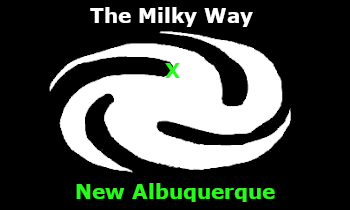Geography
The Stilted City is a city on New Albuquerque, built in a lake bed that remains dry through half of the local year, but during the local wet season, fills to form a temporary lake. The two river valleys that fill the basin are the basis for major trade routes, and the city is built at a natural crossroads where they meet. The Stilted City is located on the northern edge of the planet's southern rain-band.
People and Government
The Stilted City was built by the native Vorgon people of New Albuquerque, and they make up the majority of the population, though many others can be found there as well. The city is constantly being settled by new groups who travel along the trade routes that intersect there.
The city is divided into eleven districts plus the Grand Water Tower that stores the water supply during the dry season, and acts as the seat of government.
During the wet season, the government consists of an informal council, with a member elected from each of the eleven districts. This council has little power, and the wet season is relatively lawless. This state of affairs is sustainable because, during the wet season, the city is situated in the middle of a lake, and is connected to land only via three pontoon bridges that are easily defensible, and can be disconnected in an emergency.
At the start of the dry season, a gladiatorial tournament is held in the central market, and the winner is declared the Drought King. The Drought King rules from a palace atop the Grand Water Tower, and exerts absolute authority. Generally, the Drought King levies taxes on trade in the city, and in exchange defends the city from invaders and bandits, who generally attack during the dry season, when the city is most vulnerable.










